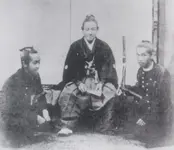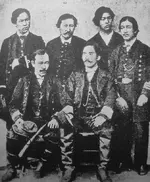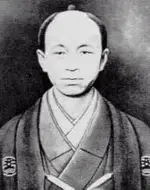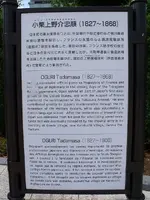Crow
Silver Member
- Joined
- Jan 28, 2005
- Messages
- 4,055
- Reaction score
- 11,293
- Golden Thread
- 0
- Location
- In a tax haven some where
- Detector(s) used
- ONES THAT GO BEEP! :-)
- Primary Interest:
- Other
- #1
Thread Owner
We have read many times about allegedly buried Japanese treasures in Philipines but what about buried treasures in Japan itself?
To us westerners perertrating the treasure myths of Japan is very hard because of the lanuage barriers. But if one was to look they may be supprised? Japan just like any other country has had its fair share of political upheavel and war during its long history.
The following story surfaced in early 1941.
JAPANESE TREASURE HUNT
NEW YORK. September 9.— A Japanese treasure hunter claims he Is about to unearth £172,500,000 in gold, Buried 250 foot deep in In the ground. says the'New York Times' Tokio correspondant.
The treasure represents the war chest of the Tokugawa Shoguns. rulers of Japan for 264 years, until the power or the emperors was restored In 1868. The treasure was buried about 100 years ago. The man who burled It killed all who knew of the hiding place and left vague directions In a will. The treasure hunter who claims to be nettling it Is this man's grandson. Hidemorl Kawahra. He has been searching for seven years. He says that 220 feet down he found human bones and a sword, as stated In the will. The gold is expected to be found another 30 feet down. In six large boxes.
Was this a tue story or perhaps an elaborate hoax to cover Japans looting of Namking?
Srange enough as interesting the possible conspiracy theory is there is still surviving evidence to suggest treasure was actually buried during the fall of the Tokugawa shoguns power to the imperialist armies in 1868.
Another story came to light in the Evening post 21 dec 1941 which gives the name of the grandfather.
DEAD MEN'S BONES
DIGGING DEEP FOR MILLIONS:
A fantastic treasure hunt for 2,300,000,000 yen in gold, under way seven years, is approaching a climax and what the treasure hunter believes will be a success that would increase Japan's gold reserve five times its present size, states a Tokio message in the "New York Times." The treasure is stated to represent the war chest of the Tokugawa Shogunate. Oguri Kozukenosuke, its Finance, War, and Navy Minister, is supposed to have buried the treasure, in anticipation of the Shogunate's downfall, immediately preceding the Meilji restoration in 1868.
The treasure hunter is Hidemori Kawahara, grandson of Kozukenosuke, who is digging for it on the basis of his grandfather's secret will. The reason that Mr. Kawahara believes he is certain of success is that after digging seven years to a depth of 220 feet he struck many human bones, a sword bearing his family crest, and other evidence he regarded as showing that he had found the burial place of not only carpenters, boatmen, coolies, stone cutters, and other labourers, but also of bannermen who transported the gold and who were supposed to have been killed by Kozukenosuke to guard its secret. The gold is said to be buried in six large cabinets at a depth of 250 feet. Mr. Kawahara has announced that in conformity with the will of his grandfather, who was captured and executed, he will turn over the gold to the State. Meanwhile, he is daily chanting Buddhist sutras to console the ghosts his grandfather's victims.
In looking beyond the monetary exageration and sensational reporting his granfather was the finance minister and fanatical spporter of the tokugawa regime that fell in 1868 and was captured and executed for refusing to surrender.History also cliams that the leader Enomoto Takeaki moved 180000 gold coins called Ryo as he retreated from Osaka castle.
When the remnants of his forces learned that the Shogun had abandoned them, they departed Osaka Castle, which was later surrendered to Imperial forces without resistance. Yoshinobu later claimed that he had been disturbed by the Imperial approval given to the actions of Satsuma and Chōshū, and, once the brocade banner had appeared, he had lost all will to fight.
French advisors Jules Brunet and Cazeneuve, who were present at the battle, left Osaka and returned to Edo on 12 January, together with Enomoto Takeaki on board the Fujisan. Enomoto brought with him various documents and a treasure of 180,000 ryō. They arrived in Edo on 14 January.
There is no mention of what happened to the remaining war funds of the Tukugawa shoganate after the 14th of january 1868. Was the above all that remained from the treasury or did Oguri Kozukenosuke the then finance minister hide a much larger fortune leaving the clues in a will to his grandson?
Was it all a front by the Japan to disguise thier rape and looting of Namking in China? Was it recovered and used for the Japanese war effort? Or is it still lie where it was hidden?
An interesting treasure legend by those daring to seek.
To us westerners perertrating the treasure myths of Japan is very hard because of the lanuage barriers. But if one was to look they may be supprised? Japan just like any other country has had its fair share of political upheavel and war during its long history.
The following story surfaced in early 1941.
JAPANESE TREASURE HUNT
NEW YORK. September 9.— A Japanese treasure hunter claims he Is about to unearth £172,500,000 in gold, Buried 250 foot deep in In the ground. says the'New York Times' Tokio correspondant.
The treasure represents the war chest of the Tokugawa Shoguns. rulers of Japan for 264 years, until the power or the emperors was restored In 1868. The treasure was buried about 100 years ago. The man who burled It killed all who knew of the hiding place and left vague directions In a will. The treasure hunter who claims to be nettling it Is this man's grandson. Hidemorl Kawahra. He has been searching for seven years. He says that 220 feet down he found human bones and a sword, as stated In the will. The gold is expected to be found another 30 feet down. In six large boxes.
Was this a tue story or perhaps an elaborate hoax to cover Japans looting of Namking?
Srange enough as interesting the possible conspiracy theory is there is still surviving evidence to suggest treasure was actually buried during the fall of the Tokugawa shoguns power to the imperialist armies in 1868.
Another story came to light in the Evening post 21 dec 1941 which gives the name of the grandfather.
DEAD MEN'S BONES
DIGGING DEEP FOR MILLIONS:
A fantastic treasure hunt for 2,300,000,000 yen in gold, under way seven years, is approaching a climax and what the treasure hunter believes will be a success that would increase Japan's gold reserve five times its present size, states a Tokio message in the "New York Times." The treasure is stated to represent the war chest of the Tokugawa Shogunate. Oguri Kozukenosuke, its Finance, War, and Navy Minister, is supposed to have buried the treasure, in anticipation of the Shogunate's downfall, immediately preceding the Meilji restoration in 1868.
The treasure hunter is Hidemori Kawahara, grandson of Kozukenosuke, who is digging for it on the basis of his grandfather's secret will. The reason that Mr. Kawahara believes he is certain of success is that after digging seven years to a depth of 220 feet he struck many human bones, a sword bearing his family crest, and other evidence he regarded as showing that he had found the burial place of not only carpenters, boatmen, coolies, stone cutters, and other labourers, but also of bannermen who transported the gold and who were supposed to have been killed by Kozukenosuke to guard its secret. The gold is said to be buried in six large cabinets at a depth of 250 feet. Mr. Kawahara has announced that in conformity with the will of his grandfather, who was captured and executed, he will turn over the gold to the State. Meanwhile, he is daily chanting Buddhist sutras to console the ghosts his grandfather's victims.
In looking beyond the monetary exageration and sensational reporting his granfather was the finance minister and fanatical spporter of the tokugawa regime that fell in 1868 and was captured and executed for refusing to surrender.History also cliams that the leader Enomoto Takeaki moved 180000 gold coins called Ryo as he retreated from Osaka castle.
When the remnants of his forces learned that the Shogun had abandoned them, they departed Osaka Castle, which was later surrendered to Imperial forces without resistance. Yoshinobu later claimed that he had been disturbed by the Imperial approval given to the actions of Satsuma and Chōshū, and, once the brocade banner had appeared, he had lost all will to fight.
French advisors Jules Brunet and Cazeneuve, who were present at the battle, left Osaka and returned to Edo on 12 January, together with Enomoto Takeaki on board the Fujisan. Enomoto brought with him various documents and a treasure of 180,000 ryō. They arrived in Edo on 14 January.
There is no mention of what happened to the remaining war funds of the Tukugawa shoganate after the 14th of january 1868. Was the above all that remained from the treasury or did Oguri Kozukenosuke the then finance minister hide a much larger fortune leaving the clues in a will to his grandson?
Was it all a front by the Japan to disguise thier rape and looting of Namking in China? Was it recovered and used for the Japanese war effort? Or is it still lie where it was hidden?
An interesting treasure legend by those daring to seek.
Amazon Forum Fav 👍
Attachments
-
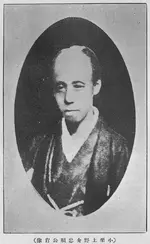 s0106l.webp191.3 KB · Views: 774
s0106l.webp191.3 KB · Views: 774 -
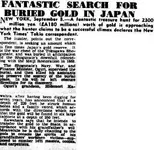 THE COURIER MAIL TUES 9 SEPT 1941 JAPANESE SHOGUN TREASURE 1868.webp44.9 KB · Views: 947
THE COURIER MAIL TUES 9 SEPT 1941 JAPANESE SHOGUN TREASURE 1868.webp44.9 KB · Views: 947 -
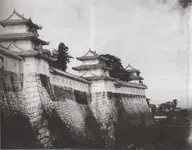 Osaka_Castle_rampart_in_1865.webp31.3 KB · Views: 773
Osaka_Castle_rampart_in_1865.webp31.3 KB · Views: 773 -
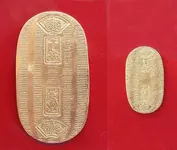 705px-Keicho_koban_1601_1695_vs_Manen_koban_1860_1867.webp99.4 KB · Views: 744
705px-Keicho_koban_1601_1695_vs_Manen_koban_1860_1867.webp99.4 KB · Views: 744 -
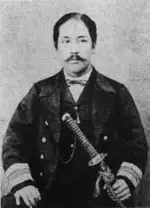 EnomotoTakeaki.webp4.7 KB · Views: 2,411
EnomotoTakeaki.webp4.7 KB · Views: 2,411 -
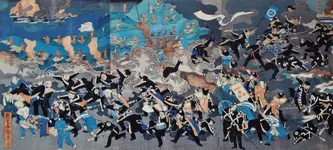 Great_victory_of_Kangun_Imperial_forces.webp442.3 KB · Views: 834
Great_victory_of_Kangun_Imperial_forces.webp442.3 KB · Views: 834



